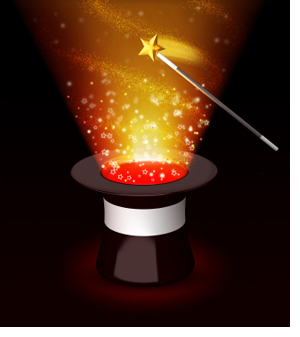 Grab your drabbest essay and crossbreed it with Harry Potter. You’ll wind up with Plato Potter, Einstein Potter, or Harry Homer Potter. Homer the thinker, that is. In other words, sprinkle in a magical writing device called show not tell.
Grab your drabbest essay and crossbreed it with Harry Potter. You’ll wind up with Plato Potter, Einstein Potter, or Harry Homer Potter. Homer the thinker, that is. In other words, sprinkle in a magical writing device called show not tell.
But what’s show not tell? When I once wrote a script, I thought show meant action that spun off new action. Like Transformers versus Rhonda Roussey, ringside, but in script form. I wondered, “How do I write up action without teetering into telling?”
Perhaps learn to show-not-tell by studying the classics? But they tell too much. Borderline tattletales! Or maybe we should dissect popular writers like James Patterson. He slips past description and punches us with action, with dialogue, with character thoughts, with character questions. His few descriptions buffer his stories with relevance, not roundabout ramblings.
But I digress.
To show not tell, avoid the passive voice. Cut out the is, was, were. They shove the actor behind the curtain. Like an audio-only UFC fight. Audio made Hitler but didn’t win him the war.
We love play-by-plays. The upper cut. The shooting pain in the nose. The watering eyes. The stagger. The head cracking the canvas. “’It gets easier, they say,’ he whimpered. A gush of blood oozed onto his tongue. So that’s the salt of a sucker-punch lunch!”
Show not tell the gore, the thrills, the motives, and the emotions. Showing showers writing with liveliness. Showing grips us with action and hurls us to the next sentence.
Janice Hardy shows simplified ways to make your writing show not tell in her book Understanding Show, Don’t Tell (And Really Getting it): Learn How to Find—and Fix—Told Prose in Your Writing. Four ways to show not tell that she wrote about: (1) direct action, (2) dialogue, (3) character thoughts, and (4) character questions. Just like James Patterson was doing!
Other ways include:
- Don’t tell the motivation with a “to [verb].” For instance, “She picked up the book to tear out a page.” Instead, “simply changing ‘to’ to ‘and’ usually fixes the problem” (p. 69): “She picked up the book and tore out a page.”
- Don’t use the word “decided.” Instead, use character thoughts, character dialogue, direct action, or character questions to reveal the choice made. “He decided to enter the tornado” could turn into, “’Holy crap!’ The tornado’s head flicked, turning toward Tom. ‘Looks like Momma’s homemade waffle cones. Double dipped’. Tom grabbed kneeling Peter by the collar. ‘We’re going in!’”
- Skip using “because.” Better yet, just replace it with a period. “He loved Sally because she looked like his koala bear teddy from grade three” would turn into, “He loved Sally. She looked like his koala bear teddy from grade three.”
- “When” takes the surprise from the action. “He screamed when the mad passenger, midflight, unlatched the door” could become, “’Drunkard. Stay off my flight.’ Tom buried his head further into his book. But the drunkard’s slurring got louder, closer. Tom stiffened. A sudden heavy thud hit Tom’s chest. A waft of whiskey stung his nostrils. ‘Get off me!’ A shoulder buried Tom’s eyes. A deafening hiss sounded, and a force pulled Tom’s body off his seat. ‘The window’s open!’ Tom screamed.”
- Don’t use “felt” to represent an internal emotion. “She felt sad” could become “She hunched over, her head slapping into the palm of her hands. Her chest sunk as a tear slid off the tip of her nose.”
Surely, academic writing needs more show not tell. After all, a bored prof might dock you after reading a single page. Instead, finesse your essays with your inner Harry Homer Potter. Homer the thinker, that is.


